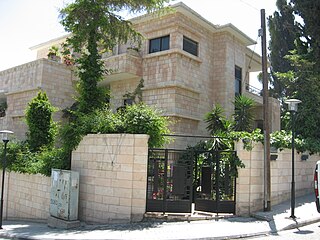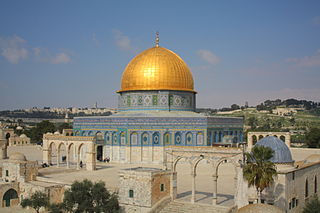 W
WThe architecture of Jordan has been subject to vast development, specifically in the final years of the twentieth century. Jordan is a small country located in the Middle East. Its location has great significance to Christians, Muslims and Jews as it is considered part of the Holy Land.
 W
WAblaq is an architectural technique involving alternating or fluctuating rows of light and dark stone. Records trace the beginnings of this type of masonry technique to the southern parts of Syria. It is associated as an Arabic term, especially as related to Arabic Islamic architectural decoration. The first recorded use of the term ablaq pertained to repairs of the Great Mosque of Damascus in 1109, but the technique itself was used much earlier.
 W
WThe Mufti House is a house located on Rainbow Street-Mango Street intersection in the Jabal Amman neighbourhood of Amman, Jordan. Like many other houses in Jabal Amman, such as the Mango House across the street, 70 years has given the Mufti House time for a significantly wooded front yard to develop. A stair-stepped stone wall covered in ivy separates it from the main street.
 W
WThe Mango House is a building in Amman, Jordan. Situated on Mango Street, the house looks out toward Jabal Akhddar on the other side of the valley that is downtown Amman.
 W
WNabatean architecture refers to the building traditions of the Nabateans in Jordan. It includes the temple and tombs of Petra in the sandstone cliffs of Jordan’s Negev desert. The style appears a mix of Mesopotamian and Hellenistic (Greek) influences.
 W
WNabataean art is the art of the Nabataeans of North Arabia. They are known for finely-potted painted ceramics, which became dispersed among Greco-Roman world, as well as contributions to sculpture and Nabataean architecture. Nabataean art is most well known for the archaeological sites in Petra, specifically monuments such as Al Khazneh and Ad Deir.
 W
WRaghadan Palace is a crown palace located in the Royal Court compound of Al-Maquar in Amman, Jordan. Constructed in 1926, the property became the residence of King Abdullah I who would go on to order the construction of several more palaces in the surrounding area. The palace is constructed in a traditional Islamic style, with colored glass windows modeled on the al-Aqsa Mosque in Jerusalem.
 W
WUmayyad architecture developed in the Umayyad Caliphate between 661 and 750, primarily in its heartlands of Syria and Palestine. It drew extensively on the architecture of other Middle Eastern civilizations and that of the Byzantine Empire, but introduced innovations in decoration and new types of building such as mosques with mihrabs and minarets. It was also inspired by Islamic architecture, and they made mosques with vibrant colours and used geometric designs because representational art wasn't allowed.